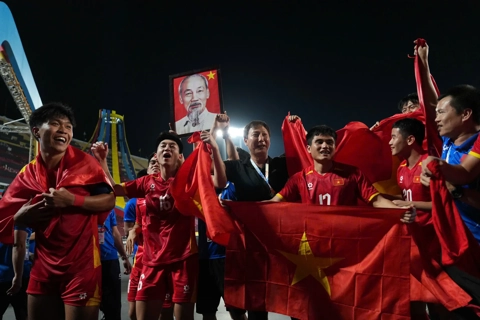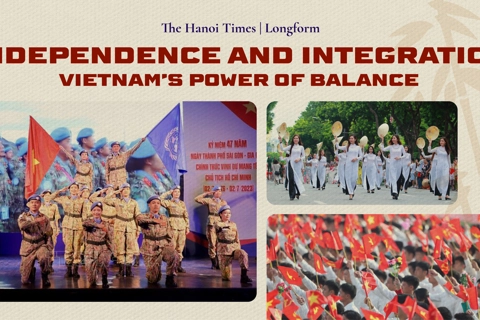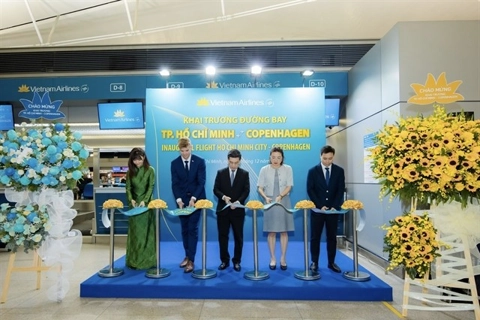Vietnam
Malaysia and Vietnam seriously concerned over South China Sea tensions
Aug 31, 2019 / 10:11 AM
Kuala Lumpur and Hanoi raise concerns after Chinese aggressively approached Vietnamese and Malaysian territorial waters.
Malaysia and Vietnam both expressed “serious concern over recent developments in the South China Sea” after Beijing intensified expansionism challenging their energy assets and sea boundaries in the region.
The two countries voiced the issues in a joint statement, during a three-day visit paid to Hanoi by Malaysian Prime Minister Mahathir Mohamad, underscoring “the importance” of maintaining peace, stability, security and the rule of law in the vast sea, according to BenarNews.
In talks between Mahathir and his Vietnamese counterpart Nguyen Xuan Phuc on August 27, Phuc said the two countries would work closely with other Southeast Asian nations to ensure freedom of navigation and overflight in the South China Sea, Malaysian media reported.
In their statement, Malaysia and Vietnam also emphasized “the importance of self-restraint, non-militarization” and “avoidance of activities that may escalate tensions.”
The statement was released in the context that Chinese survey vessels extended its activities to an area closer to Vietnam’s coastline at the weekend and the Chinese coast guard tracked around an oil rig on Malaysia’s continental shelf, BenarNews reported.
Violating Vietnamese waters
Chinese Haiyang Dizhi 8 first entered Vietnam’s exclusive economic zone (EEZ) early July, triggering strong protest from Hanoi and worldwide criticism.
Spokeswoman of the Vietnamese Ministry of Foreign Affairs Le Thi Thu Hang described the incursions as a “serious violation” of Vietnamese sovereignty and demanded Beijing withdraw the vessel.
The US accused China of using “bullying tactics” by carrying out “coercive interference” in Vietnam’s longstanding oil and gas activities.
The European Union and EU Three including Germany, France, and the UK have also voiced concerns over Chinese coercion which harasses Vietnam’s oil operations within Vietnamese EEZ and continental shelf.
Approaching Malaysia’s territorial waters
Meanwhile, Chinese survey ship “Shiyan 2” was spotted operating in Malaysia’s EEZ near the Luconia Breakers, according to information posted on Twitter on August 4 by Ryan Martinson, a professor at the US Naval College in Washington.
On August 9, he reported that the same ship was continuing to operate in the EEZ, which lies off Sarawak state in Malaysian Borneo.
On August 14, Martinson posted more information saying that another Chinese survey ship, “Haiyang 4” was heading to Malaysia’s EEZ.
Malaysian officials have not confirmed the reports about the alleged intrusions but told BenarNews, an RFA-affiliated online news service, that they would look into them.
Malaysian Foreign Minister Saifuddin Abdullah said recently that the 2002 Declaration on the Conduct of Parties, which set loose guidelines of behavior by claimant nations in the sea region, had “no fangs” and Beijing’s militarization could potentially escalate regional tensions.
In their joint statement, both Kuala Lumpur and Hanoi underlined support for the full and effective implementation of a code of conduct in the sea region.
“The two sides agreed that disputes shall be resolved through peaceful means, including full respect for legal and diplomatic processes, without resorting to the threat or use or force,” the statement said.
China has built numerous military installations with advanced ballistic-missile capabilities on reclaimed islands under its control in the South China Sea.

Vietnamese Prime Minister Nguyen Xuan Phuc and Malaysian Prime Minister Mahathir Mohamad walk in Presidential Palace in Hanoi on August 27. Photo: AP
|
The two countries voiced the issues in a joint statement, during a three-day visit paid to Hanoi by Malaysian Prime Minister Mahathir Mohamad, underscoring “the importance” of maintaining peace, stability, security and the rule of law in the vast sea, according to BenarNews.
In talks between Mahathir and his Vietnamese counterpart Nguyen Xuan Phuc on August 27, Phuc said the two countries would work closely with other Southeast Asian nations to ensure freedom of navigation and overflight in the South China Sea, Malaysian media reported.
In their statement, Malaysia and Vietnam also emphasized “the importance of self-restraint, non-militarization” and “avoidance of activities that may escalate tensions.”
The statement was released in the context that Chinese survey vessels extended its activities to an area closer to Vietnam’s coastline at the weekend and the Chinese coast guard tracked around an oil rig on Malaysia’s continental shelf, BenarNews reported.
Violating Vietnamese waters
Chinese Haiyang Dizhi 8 first entered Vietnam’s exclusive economic zone (EEZ) early July, triggering strong protest from Hanoi and worldwide criticism.
Spokeswoman of the Vietnamese Ministry of Foreign Affairs Le Thi Thu Hang described the incursions as a “serious violation” of Vietnamese sovereignty and demanded Beijing withdraw the vessel.
The US accused China of using “bullying tactics” by carrying out “coercive interference” in Vietnam’s longstanding oil and gas activities.
The European Union and EU Three including Germany, France, and the UK have also voiced concerns over Chinese coercion which harasses Vietnam’s oil operations within Vietnamese EEZ and continental shelf.
Approaching Malaysia’s territorial waters
Meanwhile, Chinese survey ship “Shiyan 2” was spotted operating in Malaysia’s EEZ near the Luconia Breakers, according to information posted on Twitter on August 4 by Ryan Martinson, a professor at the US Naval College in Washington.
On August 9, he reported that the same ship was continuing to operate in the EEZ, which lies off Sarawak state in Malaysian Borneo.
On August 14, Martinson posted more information saying that another Chinese survey ship, “Haiyang 4” was heading to Malaysia’s EEZ.
Malaysian officials have not confirmed the reports about the alleged intrusions but told BenarNews, an RFA-affiliated online news service, that they would look into them.
Malaysian Foreign Minister Saifuddin Abdullah said recently that the 2002 Declaration on the Conduct of Parties, which set loose guidelines of behavior by claimant nations in the sea region, had “no fangs” and Beijing’s militarization could potentially escalate regional tensions.
In their joint statement, both Kuala Lumpur and Hanoi underlined support for the full and effective implementation of a code of conduct in the sea region.
“The two sides agreed that disputes shall be resolved through peaceful means, including full respect for legal and diplomatic processes, without resorting to the threat or use or force,” the statement said.
China has built numerous military installations with advanced ballistic-missile capabilities on reclaimed islands under its control in the South China Sea.








